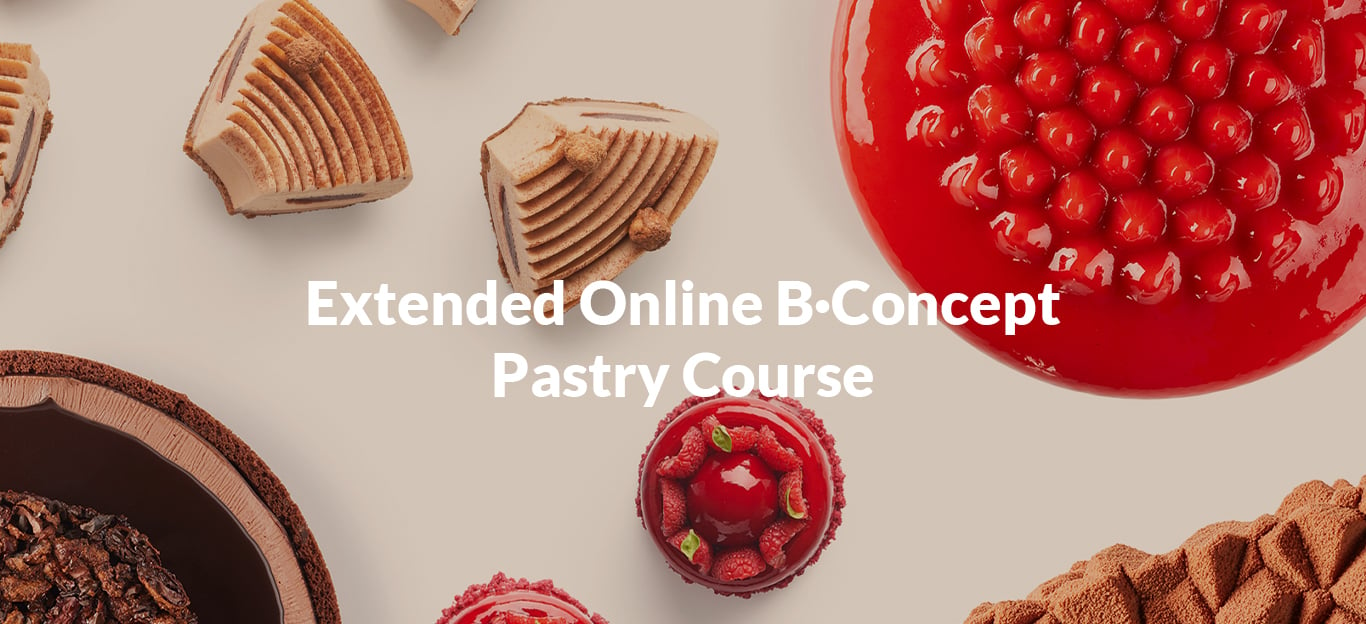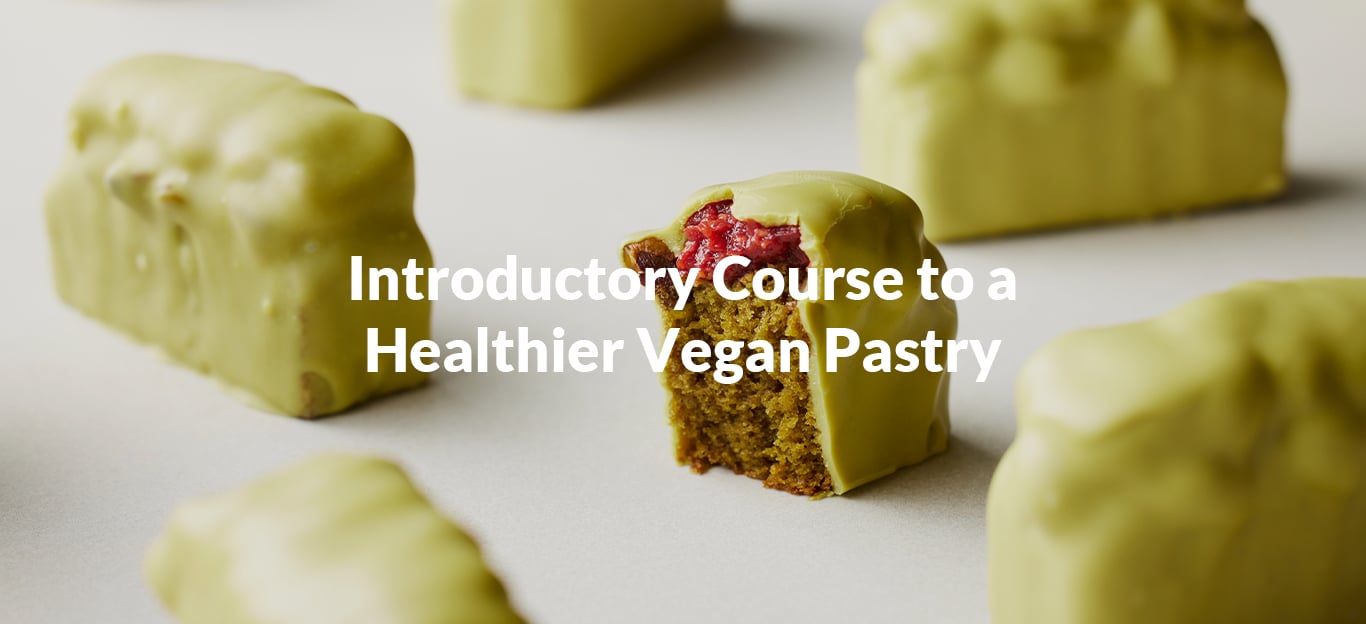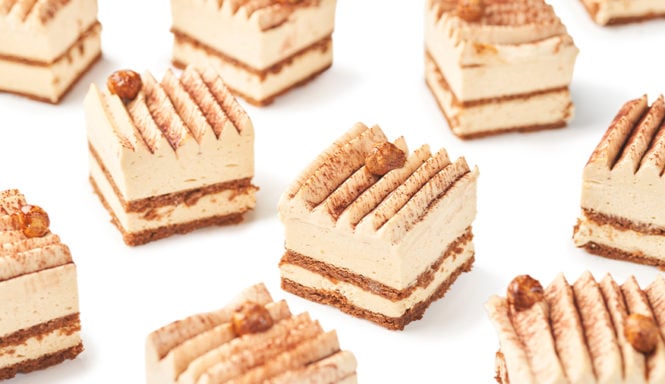
Let’s talk about pectins: a key natural gelling agent in vegan and vegetarian pastry
In our previous posts we talked about inulin and citrus fibers, ingredients that are healthy and nutritious and have interesting functional properties. Today we want to introduce you to pectins, a different kind of fiber that allows us to gel and stabilize recipes like compotes, creamies, mousses or glazes, which contain high amount of free water that need to be controlled to avoid syneresis and slow down the development of microorganisms.
On molecular level, pectins belong to the polysaccharide group, they are a type of soluble fiber that is used as a gelling agent and often replaces gelatin in plant-based recipes. In fact, pectins are found naturally in fruits and we use them to make jams and marmalades with quince, citrus or blackberries, all of which have a high content of this fiber.
Pectins that we find on the market are extracted from apple and citrus peels.

Pectins are composed of long linear chains of monosaccharides, which is why they provide us with dry extract and a great water catching capacity (parameters that we consider when formulating recipes using the B·Concept method). Moreover, they have a neutral taste and no sweetening power, meaning they are a 100% functional ingredient that allows us to maximize the flavor of other components in the recipe, without covering them up.
Here are mainly two types of pectins depending on the treatment that the fiber underwent:
- High methoxyl pectins (or HMP) which are extracted directly form the fruit and need high amount of sugar and a low pH in order to gel.
- Low methoxyl pectins (or LMP) that have been treated either with acid or alkali substances so that they gel in the presence of calcium ions without the necessity of using large amount of sugar.
Many of the pectins available on the market have been optimised to work under specific conditions (gelling in a particular pH range, low amount of sugar, etc.) or for specific preparations, such as glazes or pâte de fruits. This is achieved by combining different types of pectins and adding other ingredients like salts that regulate pH, calcium that ensures gel creation or sugars that prevent lump formation.
Pectins help us control the free water in the recipe, by trapping it in a three-dimensional network. By doing so, they create a semi-solid texture that we call “gel”.
An important characteristic of gels is their texture. The mouthfeel of a gel affects the way we perceive the taste of our preparation: a soft elastic gel covers our palate for a longer time than a firm, chewy one.
Gelatine gels for instance, give us a very pleasant mouthfeel because, given that their melting temperature is similar to our body temperature, melt in our mouth in a pleasurable way. In vegetarian or vegan recipes, we often find it very hard to replace gelatin, because we are looking for ingredients that will offer us the exact same creamy mouthfeel, which is impossible.
Pectins are a good replacement for gelatin, because, even though they don’t have the same mouthfeel, we can combine them with thickeners such as locust bean gum, creating a synergy that give us a creamy gel, that stays in our mouth for a longer time.

In the In our day-to-day recipes we use pectin mainly for creamies, compotes and gels, but we also use it for vegan mousses, as in the case of the mandarin mousse in our Ferro entremets (100% vegan). In the Extended Online B·Concept Pastry Course you will learn how to make it from beginning to end and you will discover all the possible uses of pectins, an essential ingredient in modern pastry.
¿Do you want to know more about pectins and vegetable gelling agents? In this masterclass (in Spanish) Jordi Bordas and Oscar Albiñana (Sosa Ingredients) show you how to use them in different applications:





